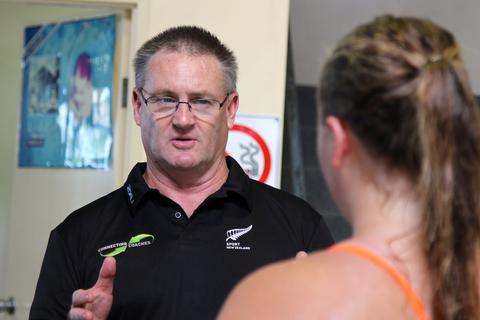High Performance on a Budget – can you create a high performance environment without spending any money?

When clients ask me to work with them, it is usually to help them become the best they can be in one or both of these two areas:
1. Help them to create a sustainable winning culture and / or:
2. Help them to create a world class high performance environment, (i.e. the things you can build and buy).
Although most of the time I get to work with professional sports and elite level Olympic teams, I am regularly asked to work with schools, amateur sporting clubs and part time coaches on a range of performance related issues, athlete attitudes, motivation techniques, leadership development, coach development exercises and sports performance enhancement programs.
Recently a client from an amateur but highly successful sporting Club asked me, “Wayne, we hear what you say about the best high performance environments in the world and about tools like GPS systems, ice baths, recovery centres, the latest video analysis systems and having a sports medicine team available 24 / 7. But we are all part timers. We gladly donate our time to coach the team and we have to fit our coaching around our jobs and our family. Our budget is minimal. Can we still create an effective high performance environment without spending any money?“
Yes, you can.
The first step…Prioritise.
The first step in doing anything where money (or the lack of it) is an issue is to establish priorities– if you can’t afford to do everything you would like to do (optionals), spend time, effort and money on the things you have to do (essentials).
In sport, there are millions of things you could do – look at the long list of sports products and services available to choose from: equipment, nutrition supplements, clothing, sports science equipment, technology, software……in fact it is harder to decide what not to do then what to do!
With so many choices to make and so many potential purchases possible, it is critical to think rationally and intelligently about what you spend your high performance dollar on and to establish a clear rationale for spending money in the high performance area.
Start with a simple High Performance Prioritisation exercise:
- Priority One: Essential: must do;
- Priority Two: Important: should do;
- Priority Three: Desirable: could do;
- Priority Four: Optional: would like to do.
Priorities will be based on what the team is trying to achieve at the time – on what the team’s core philosophies are all about. For example, a team who decides to enhance their performance by increasing the size, strength and power of all players in the off season might score gym work as Priority One.
Another team that has decided to enhance their performance by learning faster and improving their skill levels might score video technologies and feedback tools as Priority One and gym work as Priority Two.
Clearly, not everything in a high performance environment can be Priority One at all times.
One exercise I have found that works well is to bring the key drivers of the high performance program together – senior athletes, coaches, sports science, sports medicine and strength and conditioning staff together and have them work collaboratively on establishing priorities for the team. Ideally this exercise is completed for four specific periods:
- Off season;
- Immediately pre season;
- In season;
- Immediately post season.
Priority One: Things that are essential.
This is the toughest part: deciding what you absolutely can not do without. Everyone will argue that their particular area or skill or philosophy is the most important. Strength and conditioning coaches will argue that spending time in the gym is essential. Physiotherapists will argue just as passionately that injury management is essential. Coaches will argue that the most essential element of all programs is coaching time spent working with athletes on the technical, tactical and strategic skills of the game. Clearly not everyone is right or wrong – the process is dynamic.
The simplest way to resolve these arguments is to ask this question: “Can we be competitive without “xyz” (where xyz is one aspect of the performance environment)?”
In a sport like football for example:
- Can we be competitive without regularly training together to our full potential? Answer: No.
- Can we be competitive without taking sports supplements? Answer: Yes.
- Can we be competitive without consistent hard physical training? Answer: No.
- Can we be competitive without using heart rate monitors, lactate analysers and GPS tracking systems? Answer: Yes.
It is funny! Having gone through this prioritisation exercise with many sporting teams over the past ten years, inevitably the things that consistently score Priority One are “people” factors – i.e. coaching time, player attitudes, cohesion and communication across the organisation, player behaviour issues, on field / off field leadership etc. The lesson here is that ultimately- even in professional sporting teams, people, their attitudes and their passion to perform are the real difference between winning and losing, and most importantly…..
- Attitude is free;
- Desire costs nothing;
- Passion has no price tag;
- You pay zero for Commitment.
Amateur sports can think like, act like, perform like successful, winning teams if they build their culture around people factors.
Conversely, a professional team with the money to buy and build the world’s best performance environment will fail unless the right people with the right attitudes are driving the program.
Priority Two: Things that are important.
Priority two issues are those which are important but not essential. Having a world class gym with the latest equipment is important for a sport like rugby, AFL, American Football and basketball but when money is an issue, a good gym with reasonable standard training equipment will suffice.
Priority Three: Things that are desirable – “perfect world” things.
For example, in a “perfect world” all players would have access to a one hour massage three times a week. But, when it comes down it, most players are OK with one massage and taking responsibility for implementing their own recovery program.
Priority Four: Things that are optional.
In the optional category are quite often time saving devices and technological advantages: things that can potentially save time and reduce inconvenience but in a tight budget situation, they can be overcome by a little hard work, improved communication and learning some new skills.
Summary:
- Unless you have an unlimited budget – (and there is no one in the world who can honestly say that their budget is unlimited) – building and sustaining an effective high performance environment comes down to choices: to prioritising how, when and where you will allocate resources;
- Priorities will change from season to season (and even within seasons) depending on the situation and the challenges the team is facing at any time;
- Create a high performance priorities system that works for you – one that compliments the overall direction and philosophy of the high performance program;
- Invariably, people drive performance! If you only had one single dollar to spend, spend it on enhancing the performance of your people – it is the one high performance program investment that returns ten times what you spend.
Wayne Goldsmith



6 Comments
Jeremy Pryce · March 9, 2010 at 6:33 pm
Great piece of advice Wayne! May I use this if I quote the source?
Jeremy
Wayne Goldsmith · March 10, 2010 at 8:17 am
Thanks Jeremy.
Feel free to use the post if it is of value. As a general rule, I am happy for people to use any of my work if they respect the standard conventions of all published work:
1. Acknowledge the source;
2. If using my work increases their commercial opportunities (i.e. if they make money from my work) that they send me a percentage. I have three kids, a mortgage and am saving up for a little fishing boat so all donations are cheerfully accepted;
3. Leave my name on the work somewhere.
I was in another country a few years back and a guy there was selling books on swimming. When I flicked through the book, around 50% of the work was mine – but there was no acknowledgement and no profit sharing. Life is a funny thing!
Thanks for the honor of considering my work worthy of citation. Very humbling.
WG
James Marshall · March 9, 2010 at 7:04 pm
Hi Wayne,
great post again- I think that a lot of coaches use the lack of funding as an excuse for not being able to perform. A good coach can work with minimal equipment, but instil great ethic and performance amongst their players.
Coaching is about creativity as well as planning- it is amazing how many big budget organisations just chuck money away – the LTA in the UK is a prime example of building white elephants.
Wayne Goldsmith · March 10, 2010 at 8:10 am
Thanks for the comment James.
I believe more and more that investment in creativity and teaching coaches to learn faster, be open minded to possibilities and to be creative in their coaching is the most important factor to achieve success in high performance sport in this decade.
With the Internet and the access to information anywhere, anytime and for free – you have to assume that everyone knows what you know and that the days of building a coaching philosophy on “secret” knowledge are over.
Now it is the coach who creates who will be victorious – and if you combine that creativity with real self belief, anything is possible: Creativity plus Confidence = Winning Coaching in this decade.
Thank you sincerely for your support.
WG
Wayne Goldsmith · March 10, 2010 at 8:18 am
Thanks Cycling guy!
Great to have your support.
WG
Coach Training · March 25, 2010 at 7:26 pm
“The first step in doing anything where money or the lack of it, is to establish priorities – if you can’t afford to do everything you would like to do optionals, spend time, effort and money on the things you have to do essentials.” Nice post and thanks for comment.